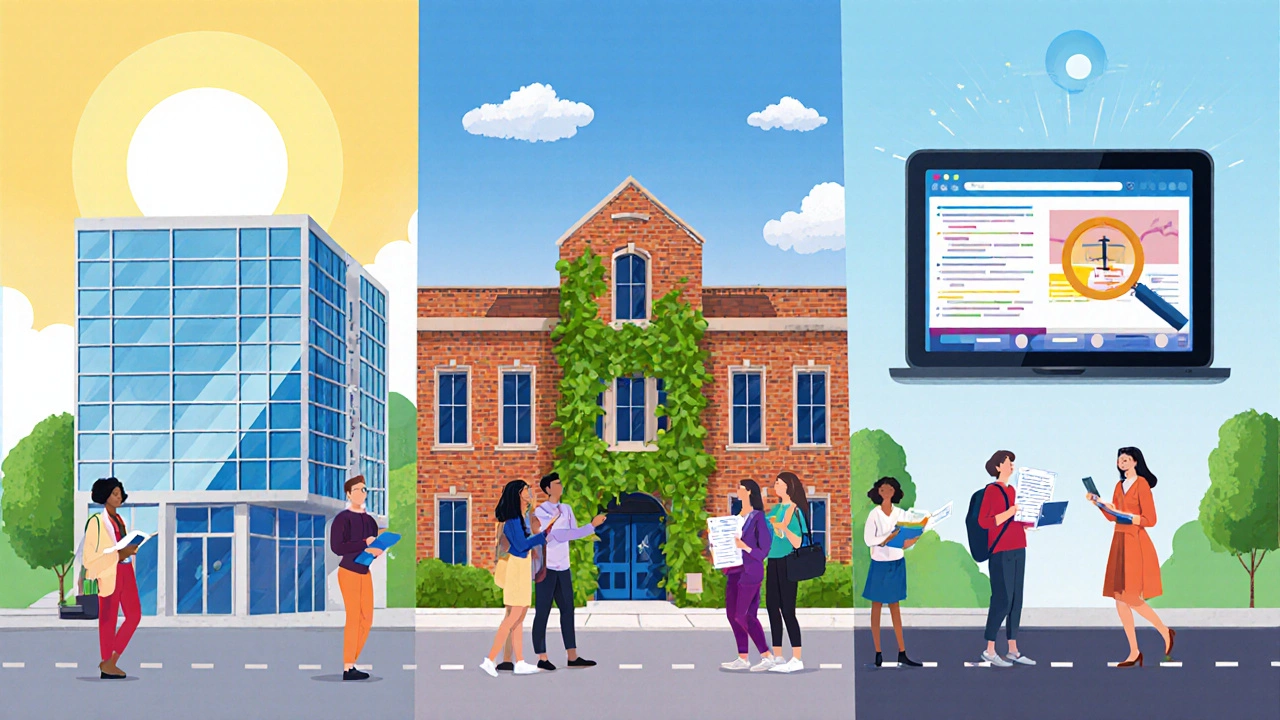Quick Summary
- A teacher training school is any institution that prepares future teachers.
- Historically it was called a normal school.
- Today you’ll hear terms like college of education, institute of teacher education, or teacher preparation program.
- All these entities share core features: accredited curriculum, supervised practicum, and a pathway to certification.
- Choosing the right one depends on your career goals, preferred learning mode, and regional certification requirements.
What is a Teacher Training School?
When you search for where to become a teacher, the phrase teacher training school pops up in many guides. In simple terms, a teacher training school is any post‑secondary institution that offers the academic courses, practical teaching experience, and certification pathways required to become a licensed educator.
These schools can be standalone colleges, departments within larger universities, or even specialized government‑run institutes. Their main job is to turn subject‑matter experts into effective classroom practitioners by teaching pedagogy, classroom management, assessment design, and inclusive education practices.
Key attributes of a teacher training school include:
- Accredited curricula aligned with national or state teaching standards.
- Mandatory field placements where students coach real classrooms under a mentor teacher.
- Assessment components that culminate in a teaching credential or licence.
The Historical Term: Normal School
Before the modern jargon emerged, most English‑speaking countries used the term normal school. The word "normal" comes from the French *école normale*, meaning a school that sets the "norms" for teaching practice. The first normal schools appeared in the early 19thcentury in France and quickly spread to the United States and Britain.
Typical features of a historical normal school were:
- Two‑year post‑secondary programs focused on pedagogy rather than deep subject mastery.
- Close ties to local public‑school districts, which supplied practicum classrooms.
- Graduates earned the title "teacher" but often needed additional certification to teach at higher grades.
By the mid‑20thcentury, many normal schools evolved into broader teacher‑education colleges, reflecting the growing complexity of education policy and research.

Modern Equivalents and Their Names
Today the same mission lives on under several brand‑names. Below is a quick snapshot of the most common alternatives.
| Common Name | Typical Institutional Host | Primary Audience | Regional Preference |
|---|---|---|---|
| College of Education | University department or standalone college | Undergraduate & graduate aspiring teachers | U.S., Canada, Australia |
| Institute of Teacher Education | Specialized institute, often public‑sector | Professionals seeking certification upgrades | UK, Ireland, Singapore |
| Teacher Preparation Program | Embedded within universities, community colleges, or online platforms | Students in bachelor or post‑bachelor tracks | Global (especially in blended‑learning models) |
| Pedagogical Institute | Often linked to research universities | Future educators with research interest | Europe (Germany, Netherlands) |
| Education Department | Government ministry or national agency | Policy‑maker teachers, curriculum designers | Developing nations |
While the names differ, the core mission stays the same: turn content knowledge into effective classroom practice.
How These Institutions Are Organized
Regardless of name, most teacher‑training entities follow a similar structural pattern:
- Curriculum Design: An accreditation body (e.g., NCATE in the U.S., QAA in the UK) approves the program’s courses. Typical modules cover educational psychology, curriculum development, assessment strategies, and inclusive pedagogy.
- Field Experience: Students complete a supervised practicum, often called a “student‑teacher” placement. This period satisfies the certification exam requirement and provides real‑world feedback.
- Assessment & Credentialing: After coursework and practicum, candidates sit for a regional licensing exam (e.g., PRAXIS in the U.S., PGCE assessment in the UK). Passing grants a teaching certificate.
Many programs also embed a pedagogical institute component-research labs or think‑tanks where faculty experiment with new teaching methods. This link to scholarship keeps the curriculum current.

Choosing the Right Path: Pros, Cons, and Fit
When you’re deciding which type of school to enroll in, consider three practical dimensions.
- Location & Delivery Mode: Traditional colleges of education often require on‑campus attendance, which works if you’re near a university. Online teacher preparation programs give flexibility but may limit local practicum options.
- Depth of Specialization: If you want a broad foundation (early childhood through secondary), a college of education is ideal. For niche routes-like special‑needs education or language teaching-an institute of teacher education may offer focused tracks.
- Career Outcomes: Some employers give preference to graduates from accredited universities because of perceived rigor. However, many school districts value the quality of your practicum experience more than the institution’s brand.
In short, match the institution’s strengths to your personal circumstances and the certification requirements of the region where you plan to teach.
Common Misconceptions About Teacher Training Schools
Myth #1: "Normal schools are outdated and no longer exist."
Reality: The name has mostly disappeared, but many modern colleges of education are direct descendants of historic normal schools, retaining the same mission.
Myth #2: "You need a master’s degree to become a teacher."
Reality: In many jurisdictions a bachelor’s degree combined with a teacher preparation program is sufficient for licensure. Master’s programs are optional and often pursued for career advancement.
Myth #3: "Online programs can’t provide quality practicum experience."
Reality: Reputable online teacher preparation programs partner with local schools for field placements, ensuring hands‑on training meets the same standards as on‑campus programs.
Frequently Asked Questions
What does the term “normal school” actually mean?
“Normal” comes from the French *école normale*, a school that set the standards-or norms-for teacher training. The term fell out of use in the mid‑20thcentury, but its legacy lives on in modern teacher‑education colleges.
Is a college of education the same as a university department?
Often yes. Many universities house their teacher‑training programs within a dedicated college of education or a department of education. The key difference is that a college typically offers a full suite of undergraduate and graduate degrees, while a department might only provide certificate courses.
Do I need to attend a physical campus to complete my practicum?
No. Most accredited programs-whether online or on‑campus-arrange local school placements for students. The practicum is tied to the teaching site, not the classroom where you study.
How long does it take to earn a teaching credential?
Typically 2‑4 years, depending on whether you start with a bachelor’s degree, enroll in an accelerated post‑baccalaureate program, or pursue a combined degree‑plus‑credential pathway.
Are teacher training schools regulated internationally?
Regulation is national. Each country has its own accreditation body that sets standards. Some international frameworks, like UNESCO’s teacher‑education guidelines, influence local policies but do not replace national licensing requirements.
Whether you call it a normal school, a college of education, or a teacher preparation program, the end goal is the same: equip you with the knowledge, practice, and credentials to step into a classroom with confidence.






